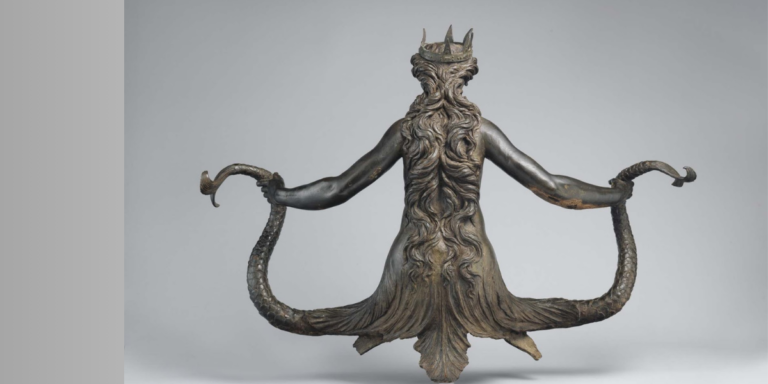The world of metalworking is experiencing a remarkable resurgence, often referred to as the “metalworkers renaissance.” This revitalization combines old-world techniques with cutting-edge technologies, breathing new life into an ancient craft. Metalworkers are not only reclaiming traditional skills, but also reimagining the role of metal in contemporary society. This article delves into the key factors driving the metalworkers renaissance, explores the role of innovation, and offers insights into how this revival is shaping the future of craftsmanship.
Understanding the Metalworkers Renaissance
The term “metalworkers renaissance” refers to a revival of interest in the craft of metalworking that combines traditional techniques with modern technology. Over the past few decades, there has been a renewed focus on the craftsmanship of metal—whether it’s sculptural art, industrial design, or custom fabrication. This renaissance is not merely a nostalgia for the past, but a purposeful and dynamic movement that is reshaping industries worldwide.
Historically, metalworking was a highly respected skill, essential to the development of infrastructure, tools, and art. From blacksmithing to advanced welding, metalworkers were central to many societies. However, as industrialization progressed, many of these traditional skills were replaced by mass production. The last few years have witnessed a shift back to craftsmanship, with metalworkers embracing a variety of methods to achieve a unique blend of the old and the new.
Key Drivers of the Metalworkers Renaissance
Several key factors are contributing to the metalworkers renaissance. These elements not only reflect the evolving nature of the industry but also highlight the broader trends in craftsmanship, technology, and sustainability that are defining our time.
Technological Innovation
Modern technology plays a pivotal role in the metalworkers renaissance. The advent of tools like 3D printing, CNC machines, and laser cutters has revolutionized the way metal is worked. These innovations allow for higher precision, faster production, and a broader range of design possibilities.
For instance, 3D printing in metalworking has opened up new frontiers in design and prototyping, particularly for industries such as aerospace, automotive, and medical devices. With 3D-printed metal parts, manufacturers can produce complex structures with less material waste and faster turnaround times.
Sustainability Trends
As sustainability becomes a driving force in global industries, metalworkers are finding new ways to reduce waste, recycle materials, and minimize environmental impact. Recycled metals, such as aluminum and steel, are increasingly being used to create products ranging from art sculptures to high-performance components for automobiles and electronics. This shift aligns with broader goals of reducing carbon footprints and promoting the circular economy.
Moreover, sustainable practices in metalworking often go hand in hand with the artisan approach, where small-scale production and attention to detail are prioritized over mass production.
Rise of Customization and Personalization
Consumers are increasingly seeking personalized, one-of-a-kind products, and metalworkers are answering the call. From custom jewelry to bespoke architectural features, the demand for tailored metal products has grown significantly. Digital tools, such as design software and laser engraving, enable metalworkers to cater to these desires, creating items that reflect the individuality of the buyer.
This shift is also noticeable in industries like interior design and furniture making, where bespoke metal elements—such as hand-forged railings or sculptural lighting fixtures—are gaining popularity. In contrast to mass-produced products, these personalized pieces carry both functional and artistic value.
Globalization and Collaboration
With the rise of digital platforms and global connectivity, metalworkers now have access to a wider network of resources, suppliers, and collaborators. This global ecosystem fosters a sense of community and encourages the exchange of ideas and techniques across borders.
For example, artists and metalworkers from different regions of the world are blending traditional metalworking techniques with contemporary design trends. This exchange of knowledge not only enriches the craft but also leads to the creation of hybrid styles that merge cultural influences and push the boundaries of what’s possible in metalwork.
The Role of Traditional Metalworking in the Renaissance
While technology and innovation are central to the modern-day metalworkers renaissance, the essence of the movement lies in a deep appreciation for traditional craftsmanship. Techniques such as blacksmithing, hand-forging, welding, and casting are being passed down to a new generation of artisans.
Many metalworkers today are returning to these roots, studying the tools and methods that have been used for centuries. These skills are being reimagined in the context of modern design, where metalworking isn’t just about function, but also about artistic expression.
For instance, traditional blacksmiths, who were once responsible for creating everyday tools and weapons, are now revered for their ability to craft beautiful sculptures, furniture, and custom metalwork. Similarly, the art of forging steel and bronze is being applied in everything from architectural facades to museum-quality sculptures.
Innovations Within the Metalworking Industry
The intersection of tradition and innovation has led to exciting advancements in metalworking. Below are a few of the most notable innovations shaping the metalworkers renaissance.
3D Metal Printing
3D metal printing has dramatically transformed the manufacturing process. Using additive technology, metal objects are built layer by layer from a digital file. This allows metalworkers to create intricate designs that were previously impossible or cost-prohibitive to produce using traditional methods. The technology is particularly valuable in industries where complex components are required, such as aerospace and medical device manufacturing.
One of the key benefits of 3D metal printing is its ability to reduce material waste. Traditional manufacturing often involves machining metal parts out of larger blocks of material, which can create significant scrap. With 3D printing, metalworkers can build parts directly from powder or wire, minimizing waste and improving efficiency.
Laser Cutting and Etching
Laser cutting and etching have revolutionized the way metalworkers approach precision cutting and engraving. The technology uses a focused laser beam to cut through metal with extreme accuracy, leaving smooth edges and intricate details. This is especially valuable in applications like architectural metalwork, custom signage, and jewelry making.
Laser etching is also used to create detailed surface patterns on metal, enhancing the aesthetic appeal of the finished product. Designers can now experiment with texture, depth, and contrast in their work, offering new creative possibilities for metal-based art.
Welding Advancements
Welding technology has also seen significant improvements in recent years. New welding techniques, such as laser welding, friction welding, and robotic welding, allow metalworkers to join materials with greater speed, precision, and strength. These innovations are being used to create everything from aerospace components to artistic sculptures.
Additionally, advancements in welding equipment have made the process more accessible to a wider range of artisans. With improved welders and safety equipment, even small-scale workshops can now produce high-quality welded pieces with ease.
Challenges Faced by Modern Metalworkers
Despite the tremendous growth and innovation in the field, metalworkers today face several challenges that must be addressed for the continued success of the renaissance.
High Material Costs
Metalworking materials can be expensive, especially high-quality metals like titanium, stainless steel, and aluminum. Fluctuations in metal prices, driven by global supply chains and economic factors, can make it difficult for small metalworking businesses to remain profitable.
Skills Gap
As more people are drawn to the metalworkers renaissance, there is a growing need for skilled workers who can operate both traditional and modern tools. Metalworking involves complex techniques that require a deep understanding of material properties, design principles, and precision crafting. There is a concern that the demand for skilled labor may outpace the available supply, making it essential to invest in education and apprenticeships for the next generation of metalworkers.
Environmental Impact
Although metalworking practices are becoming more sustainable, the industry still faces challenges regarding the environmental impact of mining, processing, and manufacturing metals. Innovations in recycling and energy-efficient processes are mitigating these concerns, but a continued focus on eco-friendly practices will be essential for the long-term success of the metalworkers renaissance.
The Future of the Metalworkers Renaissance
Looking ahead, the future of metalworking is bright. The fusion of tradition and innovation is poised to continue driving growth, with new techniques, materials, and applications emerging every year. The desire for bespoke, sustainable, and functional metal products is likely to fuel demand, ensuring that the metalworkers renaissance remains a vibrant force for years to come.
To sustain the momentum of this renaissance, there will be a need for continued investment in education, technology, and innovation. By embracing both heritage and modernity, metalworkers will be able to create a diverse range of products that appeal to a global market while maintaining a deep respect for the craft’s roots.
Comparison Chart: Traditional vs. Modern Metalworking Techniques
| Aspect | Traditional Metalworking | Modern Metalworking |
| Techniques | Blacksmithing, hand-forging, casting | 3D printing, laser cutting, robotic welding |
| Materials | Iron, steel, bronze, copper | Titanium, aluminum alloys, stainless steel, composite metals |
| Precision | Limited by hand skills, less detailed | High precision with advanced technology |
| Production Scale | Small-scale, custom work | Large-scale and mass production options |
| Design Flexibility | Limited by hand methods | Highly flexible, allows for complex, intricate designs |
| Environmental Impact | Resource-intensive, less recycling | Increased focus on sustainability, reduced waste |
| Cost | Labor-intensive, higher skill costs | Lower production costs with automation |
Conclusion
The metalworkers renaissance represents a fusion of the past and future, a movement that honors traditional craftsmanship while embracing modern technologies. Metalworkers today are reviving and reimagining their craft, creating innovative products that blend art, engineering, and sustainability. As the industry continues to evolve, the future of metalworking looks both bright and exciting, driven by a deep respect for history, a passion for innovation, and a commitment to quality craftsmanship.

